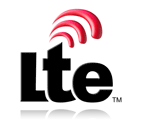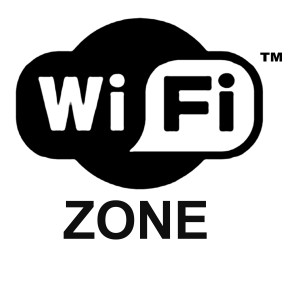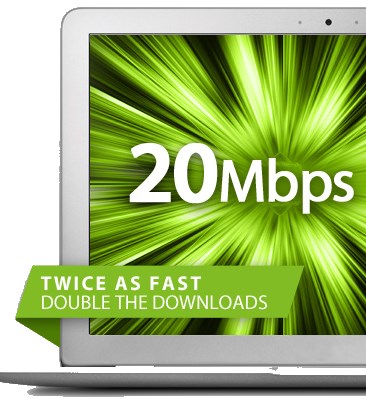 The BBC recently reported Americans are vastly overpaying for substandard broadband service that continues to fall behind in global rankings. In response to the story, some real world examples from around the globe threaten to produce North American Broadband Envy:
The BBC recently reported Americans are vastly overpaying for substandard broadband service that continues to fall behind in global rankings. In response to the story, some real world examples from around the globe threaten to produce North American Broadband Envy:
Bulgaria – Dirt Cheap Broadband: “Bulgaria is a great place for being online,” says Radi Radev, who lives in the capital city of Sofia. “Competition is strong and it is usual to pay as little as $13.5o per month for 40Mbps. Higher speeds are available for up to 40 dollars. However, it is common to pay for 40Mbps, but actually receive 80+ for no extra charge. Slower Internet service for office use can be as cheap as $6.75.”
Finland – Broadband Heaven: “I’d say I live in Internet heaven,” says Juho Nykanen, who lives in Turku. “Broadband to the home by either cable or fiber is inexpensive and competition is very good from a consumer’s perspective. Most service providers offer one to two-year deals from under $13.50 per month for 10Mbps to 100Mbps or more for between $27-67 per month, depending on where you live. Usually you get the network adapter included in the package or you can buy with no leasing. Wireless 3G and 4G prices are related and in some cases even lower than regular wired Internet access. Network coverage is good, and improving all the time.”
United Kingdom – DSL Extreme: “I am more than happy,” says Simon from Blackpool. He can use a phone, tablet, laptop, PC and Xbox all at once with no visible effects. For example, he is able to run Netflix on all the above devices and watch five movies at the same time. Simon buys a 60Mbps broadband package as part of a $91.50 triple play bundle that includes TV, phone, broadband, and line rental. He doesn’t buy premium sports or movie channels. “I test my broadband regularly and often my speed is in excess of 60Mbps. I can download a 700 MB film in two minutes.”
Broadband Utopia in Utah: “We pay about $70 per month for phone and Internet,” says David from Murray, Utah “although we will be switching soon to a lower priced competitor.” I have 50Mbps upload and download speeds (increasing to 100Mbps soon) with no caps on monthly data transfer. Our city is part of Utopia – a publicly owned open-infrastructure fiber-to-the-door network where multiple carriers compete on the same infrastructure. It’s not perfect but the speed/price is great compared to the local cable and phone companies that own their respective infrastructures.”
Broadband Unlimited in Switzerland: “Here in Geneva, for 90 Swiss Francs [$82] per month, I get 150/10Mbps broadband, as well as free local and international calls,” says Zac Thomspon. “This is via a cable network. There is also absolutely no download limit on data, or any usage caps. It’s an excellent deal.”

Romanian ISP RCS & RDS sells unlimited 1,000Mbps fiber broadband for $18 a month. But if you also subscribe to digital TV and mobile service, your monthly cost for Digi Net Fiberlink 1000 drops to $15 a month.
Let the Boss Pay for Internet Access: “Here in Denmark, our employers often pay the costs of our home Internet access – it’s seen as a necessity for work,” says Lars from Copenhagen.
Broadband High in the Netherlands: “I am on 150Mbps (actual speed 170Mbps) down and 15Mbps up with TV and phone lines for $86. I am in broadband heaven,” says Clive L. Stevensweert.
Deutschland Broadband Einigkeit und Recht und Freiheit: “I moved from the U.S. after living there for 54 years,” says Jim Hagerman. “The cost of TV, Internet and phone was outrageous. In Germany I pay $54 per month for phone and DSL faster than I had in the States. I can call Europe landlines and the U.S. for free! I pay $67 per year for HD+ on my television. I stream EuroSport with no problems, including the entire 24 Hours of LeMans. I have far better capability here in Deutschland than I had in the U.S. for far less money.”
The Carpathian Connection: “I’m lucky to say that we’re in broadband heaven,” says Cosmin from Oradea, Romania. “My provider has just started selling a 500Mbps connection for $15 a month. I’m on a 50Mbps connection that costs only $9, but it’s enough for my needs.”
Budget-Priced Unlimited DSL, French-Style: “Here I have a bundle of landline phone, unlimited ADSL Internet and plenty of TV channels for $43 per month, inclusive of ‘line rental’ and route,” says Russ Lewis from Gex. “The landline phone is my former local number, not some special number. We get completely free calls to landlines, but not usually mobiles, to France and over 100 countries. Technically, these calls are limited to a maximum of three hours each, but who talks for that long anyway? As we live about three miles from the telephone exchange, the DSL Internet speed is around 6 Mbps, but people closer to an exchange can get two to three times faster speeds.”
 Qualcomm plans to push for the use of LTE — the fourth generation cellular technology common in the latest smartphones — in the unlicensed radio bands used for Wi-Fi and Bluetooth.
Qualcomm plans to push for the use of LTE — the fourth generation cellular technology common in the latest smartphones — in the unlicensed radio bands used for Wi-Fi and Bluetooth. Jacobs said the LTE standard was more advanced than Wi-Fi and capable of limiting interference to other devices. LTE could also be adopted for one-way broadcasts that other nearby users could watch without clogging the airwaves.
Jacobs said the LTE standard was more advanced than Wi-Fi and capable of limiting interference to other devices. LTE could also be adopted for one-way broadcasts that other nearby users could watch without clogging the airwaves.

 Subscribe
Subscribe Cincinnati Bell is an island in the middle of a sea of AT&T — offering over 258,000 southwestern Ohio residents and businesses access to a fiber to the home network that has kept customer disconnects down and broadband speeds up.
Cincinnati Bell is an island in the middle of a sea of AT&T — offering over 258,000 southwestern Ohio residents and businesses access to a fiber to the home network that has kept customer disconnects down and broadband speeds up. The company has plans to bring Fioptics to 35 percent of Cincinnati by the end of this year, according to Leigh Fox, chief technology officer for Cincinnati Bell. The company has successfully upgraded its fiber network to offer 53,000 more homes a fiber alternative to Time Warner Cable during the first nine months of this year. At least 29 percent of Cincinnati residents have cut Time Warner Cable’s cord at least once, trying the fiber to the home service.
The company has plans to bring Fioptics to 35 percent of Cincinnati by the end of this year, according to Leigh Fox, chief technology officer for Cincinnati Bell. The company has successfully upgraded its fiber network to offer 53,000 more homes a fiber alternative to Time Warner Cable during the first nine months of this year. At least 29 percent of Cincinnati residents have cut Time Warner Cable’s cord at least once, trying the fiber to the home service. The BBC
The BBC 


 That $1 billion could be a key part of any blockbuster buyout deal because Malone can leverage that and other money with an even larger infusion from today’s easy access capital market. He has done it before, leveraging countless buyouts of other cable operators that built Malone’s Tele-Communications, Inc. (TCI) into the country’s largest cable operator by the early 1990s.
That $1 billion could be a key part of any blockbuster buyout deal because Malone can leverage that and other money with an even larger infusion from today’s easy access capital market. He has done it before, leveraging countless buyouts of other cable operators that built Malone’s Tele-Communications, Inc. (TCI) into the country’s largest cable operator by the early 1990s. Khan believes Malone laid his consolidation foundation with Liberty’s significant ownership interest in Charter Communications, from which he can build a new cable empire.
Khan believes Malone laid his consolidation foundation with Liberty’s significant ownership interest in Charter Communications, from which he can build a new cable empire.